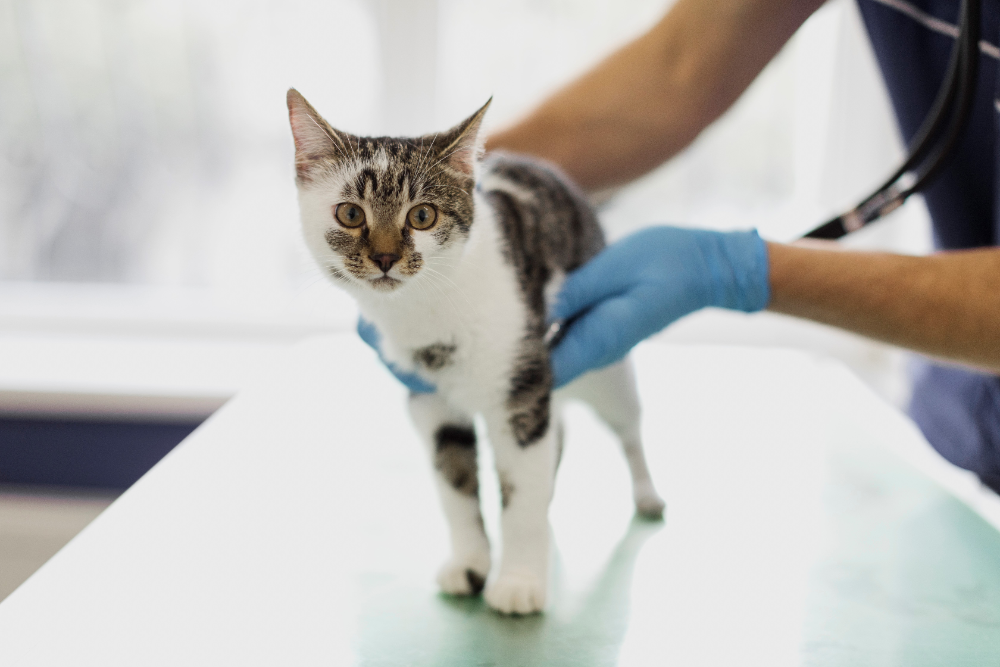Cat Fleas and Ticks: How to get rid of Fleas on Cats? (Vet Advice)
Written by:
Author: Dr. Linda Simon
Dr. Linda Simon is a veterinary surgeon working with seven years of experience. She is a fellow of the British Veterinary Association and specializing in animal medicine. Also, she has been the Woman magazine resident vet for the past two years and writes a regular column for them, focusing on pets and their health.
View all 30 articlesLearn about our editorial process and veterinary review board.
Viewed: 173
Updated on: 08/12/2021
External parasites, there’s nothing that can make your skin crawl more, right? Just the thought of these nasty critters running amok on our cats is enough to make anyone feel uneasy. So, what exactly are they?
Fleas are tiny wingless brown insects that are visible to the naked eye. They may be seen on a cat’s skin, though often jump so quickly that they are tricky to spot. Some cats are such fastidious groomers that we never see a flea, however, they can see evidence that they are thereby examining the skin and finding small, black, grit which is the flea dirt (poo). If uncertain, the coat can be combed out onto some white tissue paper and any ‘dirty specks’ wet with water. If they turn a red/brown color, fleas are present!
Ticks are much easier to spot as they sit on the surface of the skin in one position, slowly growing as they eat the cat’s blood. With eight legs and a biting mouth part, they look like tiny spiders. Owners will sometimes mistake a tick for a wart or cyst but they are quite easy to diagnose as their surface is shiny and uniform and, if you look closely, you can see their legs.
Which products do vets recommend for Fleas and Ticks on Cats?
Not all parasite prevention is created equal and, ask any vet, you may as well be throwing your money away if the wrong product is bought. In fact, not only is purchasing a cheap and ineffective product a waste of time, some can even cause issues such as skin irritation.
The best products are often those that are prescription-only and are known to work quickly. These include spot-on such as Bravecto and Stronghold Plus. Advocate spot-on has gained a reputation for being the best flea preventative but does not get rid of ticks. For those kitties that are not keen on spot-on, there is a great collar called Seresto, which is a flea collar with added tick control that lasts for up to eight months.
Do indoor cats need flea and tick treatment?
While it is far less common for solely indoor cats to become infected with external parasites, it is certainly a possibility. This is especially true if cats have access to areas such as ‘catios’, if a new kitten has been brought into the home or if there is a dog that is brought out on walks. However, in any household, fleas and ticks are a possibility as they can be brought in on the shoes and clothing of people who have been outside; particularly in long grass and woodlands.
READ MORE: Vet Recommended Flea Treatment for Cats
It is typically advised that indoor cats receive a parasite preventative once or twice a year. For many, this is given by the vet during their annual health check.
What is the fastest way to get rid of Fleas on a Cat?
The trick when it comes to treating a flea infestation is to treat the environment as well as the cat. Neglecting to do so will result in a chronic flea problem that is hard to shift (as well as an itchy cat and a frazzled owner!). Roughly 95% of the fleas and their eggs, pupa, and larva live off the cat in their bedding and on curtains and carpet. This needs to be addressed by using a strong insecticide spray (such as Indorex or RIP fleas), hot-washing bedding, and hoovering frequently. By deep cleaning the house and treating any cats and dogs in the home at the same time, the fleas should quickly become a thing of the past.
 Cat Veterinary Tips Signs That Your Cat is in Labor: How to tell if a Cat is Pregnant?
Cat Veterinary Tips Signs That Your Cat is in Labor: How to tell if a Cat is Pregnant? - 14225
- 1
 Cat Veterinary Tips Kittens First Shots: When do Kittens get their First Shots?
Cat Veterinary Tips Kittens First Shots: When do Kittens get their First Shots? - 500
- 0
 Cat Care Why Does My Cat Attack My Legs? 10 Reasons Why and What To Do About It (Vet-Approved Advice)
Cat Care Why Does My Cat Attack My Legs? 10 Reasons Why and What To Do About It (Vet-Approved Advice) - 45566
- 21
 Cat Veterinary Tips Cat Stomach Gurgling: Vet Advice on Why is Your Cat Stomach Gurgling?
Cat Veterinary Tips Cat Stomach Gurgling: Vet Advice on Why is Your Cat Stomach Gurgling? - 35340
- 4
 Cat Veterinary Tips My Cat Lost its Voice: Can Cats get Laryngitis? (Vet Advice)
Cat Veterinary Tips My Cat Lost its Voice: Can Cats get Laryngitis? (Vet Advice) - 23247
- 13























